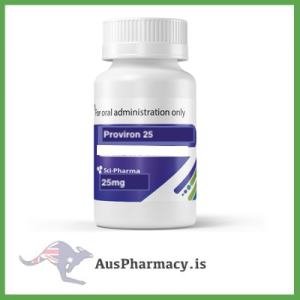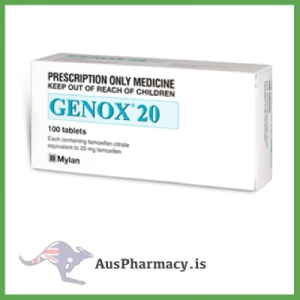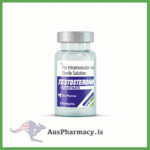Sci-Pharma Nolvadex 20 mg – Educational Overview of Tamoxifen Citrate and Estrogen Receptor Modulation
Sci-Pharma Nolvadex 20 mg (Tamoxifen Citrate) serves as an important educational reference compound in receptor pharmacology and endocrine system studies. It provides a learning platform for understanding Selective Estrogen Receptor Modulators (SERMs) — a class of compounds that act as partial agonists or antagonists on estrogen receptors in different tissues.
Through academic observation, students can explore how molecular selectivity defines both therapeutic and mechanistic behavior within the body’s hormonal networks.
2. Chemical Structure and Properties
Tamoxifen Citrate is an organic compound with the formula C₂₆H₂₉NO·C₆H₈O₇, belonging to the triphenylethylene group of molecules.
In chemistry and pharmaceutical education, it is used to demonstrate:
-
Stereochemical isomerism and its influence on receptor binding
-
Hydrophobic interactions between ligands and the receptor pocket
-
The impact of prodrug conversion on bioavailability
Analyzing its molecular structure teaches how minor alterations in aromatic rings affect biological activity and selectivity.
3. Pharmacological Mechanism
From a learning standpoint, Tamoxifen illustrates competitive antagonism at the estrogen receptor (ER).
Students can trace how it:
-
Binds to the ligand-binding domain (LBD) of ERα and ERβ
-
Prevents estradiol from activating gene expression in certain tissues
-
Acts as a partial agonist in others, demonstrating tissue-specific modulation
This nuanced action is why SERMs are invaluable in teaching selective pharmacodynamics and receptor biology.
4. Receptor Science and Signal Transduction
Tamoxifen’s educational relevance extends to signal transduction pathways.
When ERs are blocked by Tamoxifen, transcription factors such as AP-1 and SP-1 exhibit altered activity, showcasing the cross-talk between nuclear receptors and cellular signaling.
Pharmacology students learn about:
-
Co-activators and co-repressors in gene regulation
-
Ligand-dependent receptor conformations
-
Downstream gene expression and epigenetic influence
This section bridges molecular biology and drug action education.
5. Endocrine System Education
The endocrine system operates through feedback loops. Nolvadex helps learners visualize how exogenous receptor modulators disrupt or balance these loops.
Key topics include:
-
Hypothalamic–pituitary–gonadal (HPG) axis interactions
-
Estrogenic feedback on gonadotropins
-
The concept of homeostasis under pharmacological influence
By modeling these mechanisms, students understand how selective modulators influence hormonal communication.
6. Pharmacokinetics and Metabolism
Tamoxifen’s transformation into active metabolites such as endoxifen and 4-hydroxytamoxifen offers an educational example of:
-
Phase I oxidation via CYP2D6 and CYP3A4
-
Phase II conjugation and excretion
-
The relationship between genetic variation and drug response
Teaching students to map metabolic pathways deepens their understanding of biotransformation and pharmacogenetics.
7. Applications in Pharmacology Education
Sci-Pharma Nolvadex 20 mg is valuable for:
-
Demonstrating ligand–receptor interactions in biochemistry labs
-
Teaching dose–response relationships and affinity curves
-
Analyzing HPLC and UV-Vis spectra for compound identification
-
Discussing drug design strategies for tissue selectivity
Such applications equip students with skills in both molecular and applied pharmacology.
8. Comparative Learning
When contrasted with full estrogen agonists or antagonists, Tamoxifen illustrates how partial agonism creates differential effects across tissues.
Students compare:
-
SERMs like Raloxifene vs Tamoxifen
-
Complete blockers vs modulators
-
Clinical and biochemical outcomes in different models
This comparison teaches critical evaluation and mechanistic thinking in drug classification.
9. Safety and Ethical Handling
In an educational environment, hormone-active materials must be handled with care.
Academic institutions ensure:
-
Proper storage and labeling
-
Supervised use for research only
-
Compliance with ethical and safety standards
This reinforces the importance of bioethics and responsible scientific practice in pharmaceutical education.
10. Analytical Techniques
In analytical chemistry courses, Nolvadex serves as a model compound for:
-
Quantitative assay development
-
Spectroscopic characterization (IR, MS, NMR)
-
Stability testing and degradation analysis
These practical lessons connect the classroom to real-world pharmaceutical quality control.
11. Sci-Pharma’s Educational Commitment
Sci-Pharma produces research-grade compounds for educational and laboratory use, enabling:
-
Reproducible results in student experiments
-
High-purity standards for accurate analysis
-
Accessible resources for academic training
By supplying quality materials, Sci-Pharma supports the global mission of pharmaceutical education and research integrity.
12. Conclusion
Sci-Pharma Nolvadex 20 mg (Tamoxifen Citrate) represents a powerful educational tool for understanding estrogen receptor modulation, molecular selectivity, and drug mechanisms within the endocrine system.
It illustrates how structure, receptor interaction, and biotransformation combine to produce precise pharmacological responses.
Through structured academic study, students gain insight into receptor science, hormone chemistry, and the ethical application of pharmaceutical knowledge — foundations essential to modern biomedical research.









